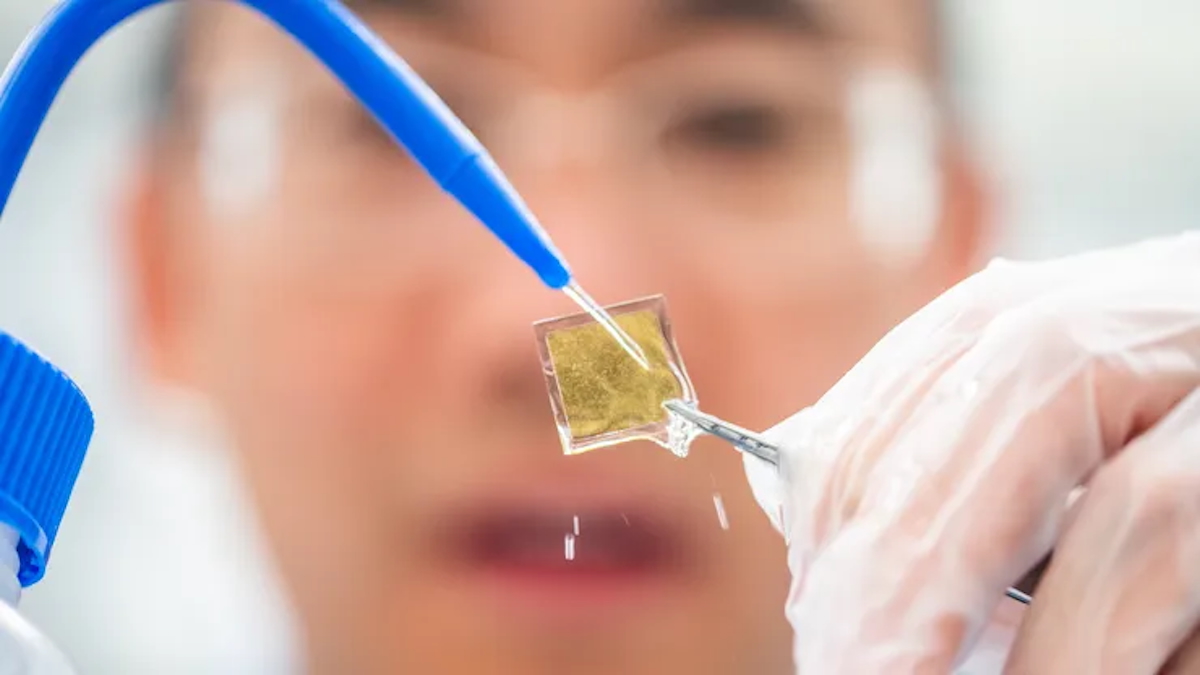The article Combuscoable Solar cell is supposed to appear hydrogen production. You can start the day well every morning via our newsletter update.

Hydrogen is considered a hope for the energy transition. So far, however, it is at most suitable for the drive of trucks, ships or aircraft. However, hydrogen production could significantly boost a new solar cell from Sweden.
The European Union wants to be climate -neutral by 2050. As early as 2035, no new petrol and diesel vehicles are to be approved. The alternative: electric motors. However, these are not yet suitable for all types of transport
Especially when it comes to heavy trucks, ships and aircraft, batteries for energy storage are rather not an option. “We have to find clean and renewable energy sources for these means of transport,” says Jianwu Sun, extraordinary professor at the University of Linköping (Liu). He and his team concentrate In their research Therefore on hydrogen as an energy source.
New solar cell is intended to consider hydrogen production
So far, the large -scale use of hydrogen has failed because it cannot be produced efficiently and inexpensively in its “green” form. The Liu researchers want to solve this problem with a new solar cell. You work on the development of materials that can be used to produce hydrogen from water using the energy of the sunlight – apparently with success.
Because with the solar cell, they recently managed to increase the efficiency of hydrogen production by eight times. The new material of the module consists of three layers: cubic silicon carbide, cobalt oxide and a catalyst oven material that is supposed to help with water splitting.
When sunlight meets, electrical charges are generated, which are then used to split water. A challenge in the development of materials for this application is to prevent the positive and negative loads from merging again and neutralizing each other.
In their study, the researchers show that their newly developed material increases the ability to separate the loads by combining the layers and thus makes water splitting more effective.
The future of hydrogen production?
What is special about the development is not only the high efficiency, but also the possibility of producing the solar cells inexpensively and large. This could make direct solar water splitting a realistic option for industrial use for the first time.
Most materials that are currently being developed have an efficiency of one to three percent. The researchers strive for an efficiency of ten percent for the commercialization of green hydrogen technology from Sweden.
If the reaction can be fully driven with solar energy, the costs for the production of green hydrogen would decrease compared to the production with additional renewable electricity, as is carried out in the technology used today.
Jianwu Sun suspects that it could take about five to ten years for the research team to develop materials that reach the coveted ten percent limit. Hydrogen is currently mostly obtained from natural gas with high energy expenditure. At the same time, large quantities of CO2 are also created. This “gray” hydrogen is considered climate -friendly.
“Green” hydrogen is created by means of electrolysis using electricity from renewable sources. Water is split into oxygen and hydrogen, whereby no direct CO2 emissions arise. However, the efficiency of the conversion and the costs for renewable electricity against the economic breakthrough play.
Also interesting:
- Researchers produce hydrogen from sea water and old beverage cans
- For transport: German company stores hydrogen in iron balls
- Solard roof on sewage treatment plant: double climate and environmental protection
- Researchers develop the most efficient organic solar cell in the world
The article Combus-Solar cell is intended to produce hydrogen production. Follow us too Google News and Flipboard Or subscribe to our update newsletter.
As a tech industry expert, I believe that the concept of using combined solar cells to compensate for hydrogen production is a promising and innovative approach. By integrating solar cells with hydrogen production systems, we can maximize the efficiency of renewable energy generation and storage.
This technology has the potential to address some of the key challenges in the renewable energy sector, such as intermittency and storage capacity. By using solar cells to generate electricity during sunny days and using the excess energy to produce hydrogen through electrolysis, we can store and utilize clean energy even when the sun is not shining.
Furthermore, hydrogen has the potential to serve as a versatile energy carrier for various applications, such as fuel cells for transportation and industrial processes. By combining solar cells with hydrogen production, we can create a more sustainable and resilient energy system.
Overall, I believe that the development of combined solar cells for hydrogen production is a promising avenue for advancing renewable energy technology and transitioning towards a more sustainable energy future. It will be exciting to see how this technology evolves and contributes to the decarbonization of our energy systems.
Credits